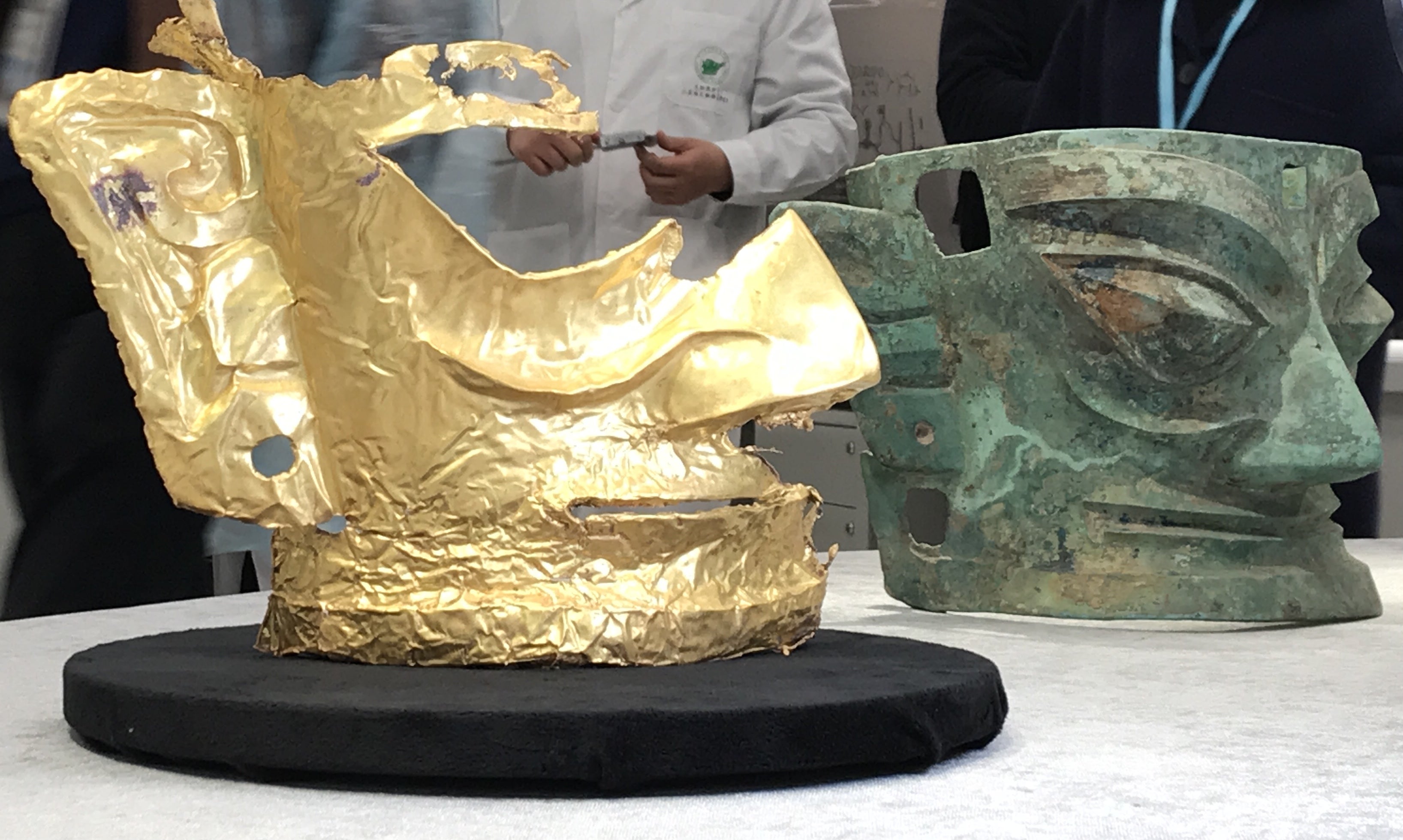Archaeologists find stunning 3,000-year-old gold mask in China - and the internet turns it into a meme
The huge cache of relics were discovered in six ‘sacrificial pits’ along with other treasures made from gold, bronze, ivory, jade and bone. But only the mask has since found online stardom

Your support helps us to tell the story
From reproductive rights to climate change to Big Tech, The Independent is on the ground when the story is developing. Whether it's investigating the financials of Elon Musk's pro-Trump PAC or producing our latest documentary, 'The A Word', which shines a light on the American women fighting for reproductive rights, we know how important it is to parse out the facts from the messaging.
At such a critical moment in US history, we need reporters on the ground. Your donation allows us to keep sending journalists to speak to both sides of the story.
The Independent is trusted by Americans across the entire political spectrum. And unlike many other quality news outlets, we choose not to lock Americans out of our reporting and analysis with paywalls. We believe quality journalism should be available to everyone, paid for by those who can afford it.
Your support makes all the difference.An extraordinary archaeological discovery in China has captured the imagination of the country’s netizens, with a 3,000-year-old ceremonial gold mask finding a new lease of life as a meme online.
The culturally significant artefact was among a huge cache of 500 Bronze-Age relics unearthed southwest China's Sichuan province, at the site of the legendary Sanxingdui Ruins.
Along with fragments of gold masks, the archaeologists discovered bird-shaped gold ornaments, gold foil, bronze head portraits foils and artefacts made from ivory, jade and bone.
But it was the mysterious half-face gold mask that stole the spotlight on Chinese microblogging site Weibo and inspired an array of memes and videos.
A hashtag that translates as “Sanxingdui gold mask photo editing competition” has been viewed about 4 million times on Weibo, according to BBC News.
Read more:
Several users superimposed the facemask with other popular icons while they praised it as “stunning” and “beautiful”.
The face mask was morphed with Japanese action figure Ultraman, popular Japanese cartoon Hello Kitty, a panda and even an alien.
Officials at the museum for Sanxingdui also joined in the fun and shared their own version of the meme - a picture of the mask completing the outline of a teddy bear’s face - as well as a promotional animated music video, showcasing the mask and other artefacts.
“Good morning, we've just woken up, apparently everyone's been busy doing some Photoshopping?” the museum said as it shared its own meme.
Researchers believe the discovery of the artefacts could shed more light on the ancient Shu civilisation, which ruled the area before 316 BC but left scant written records.
All the items were found in six “sacrificial pits”, where Shu people are believed to have offered sacrifices to their ancestors and the earth. The rectangular-shaped pits were discovered between November 2019 and May 2020, according to the National Cultural Heritage Administration (NCHA).
The gold mask weighs 280 grams (0.6 pounds) and is estimated to be made of 84 per cent gold, according to NCHA.
Join our commenting forum
Join thought-provoking conversations, follow other Independent readers and see their replies
Comments